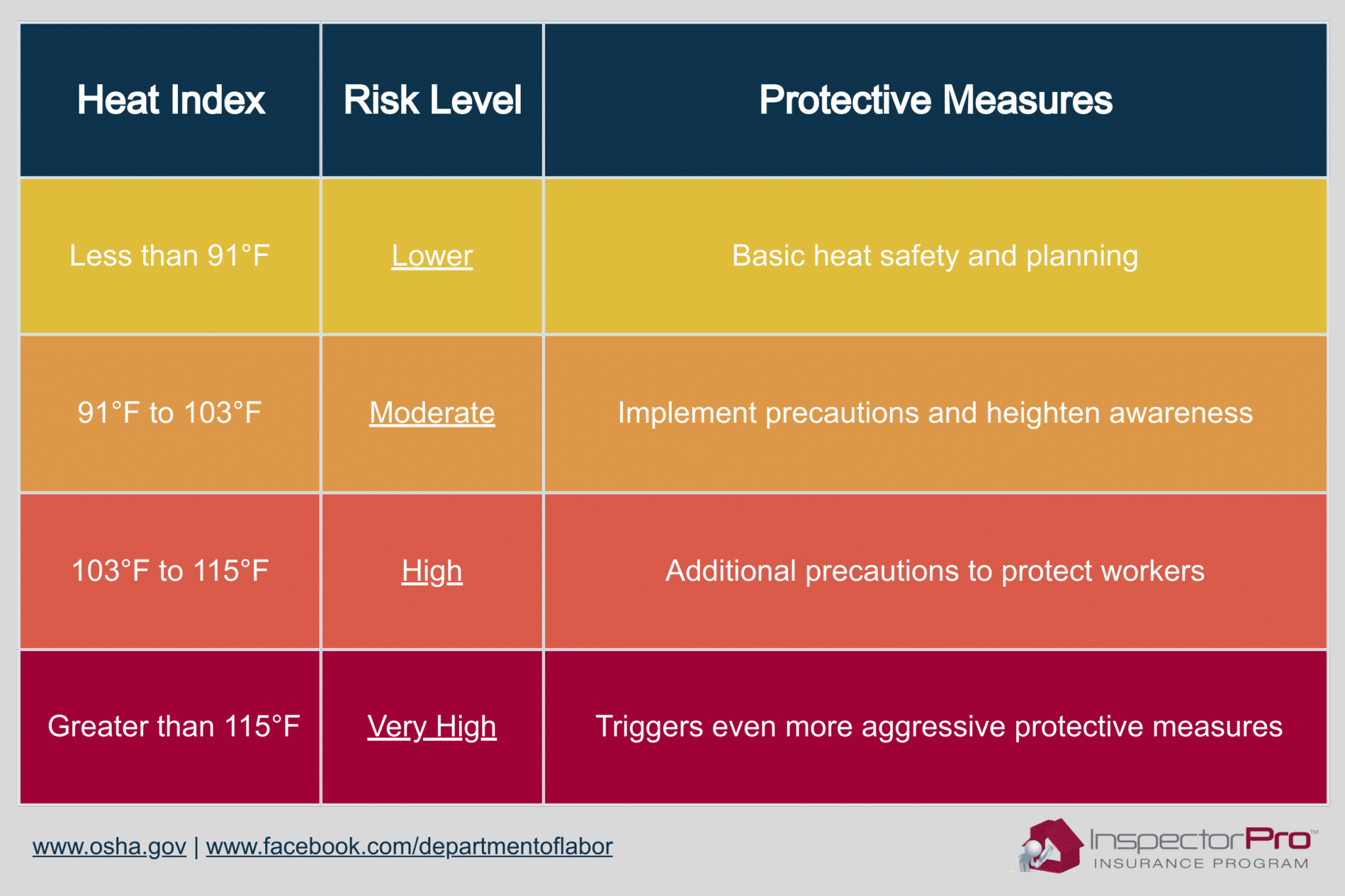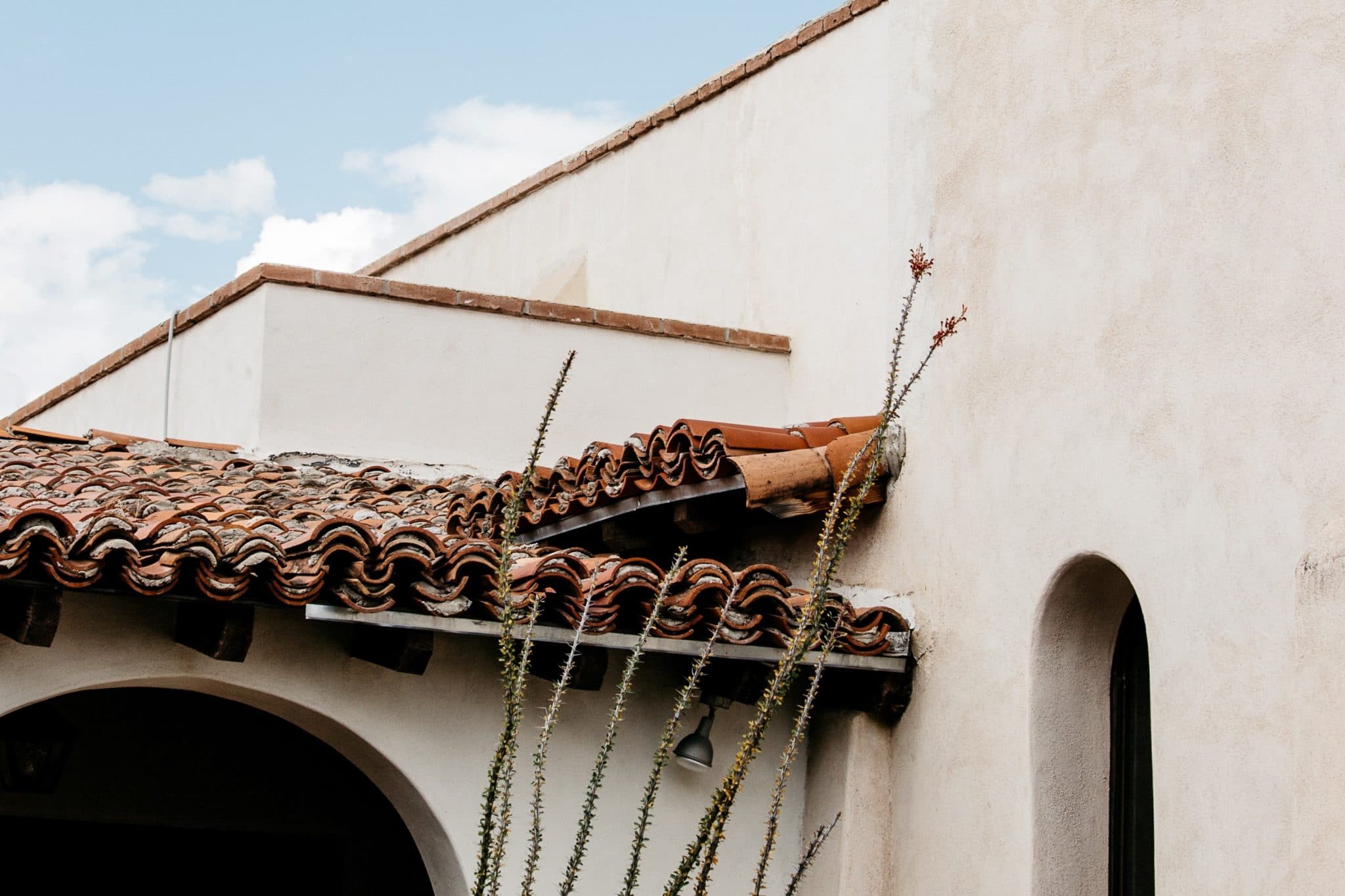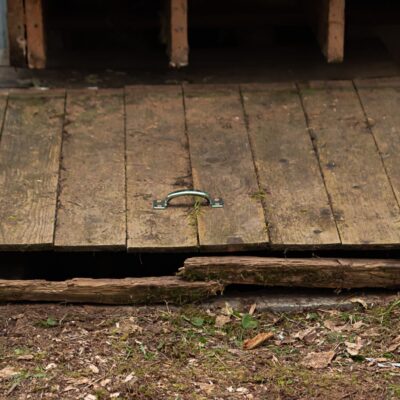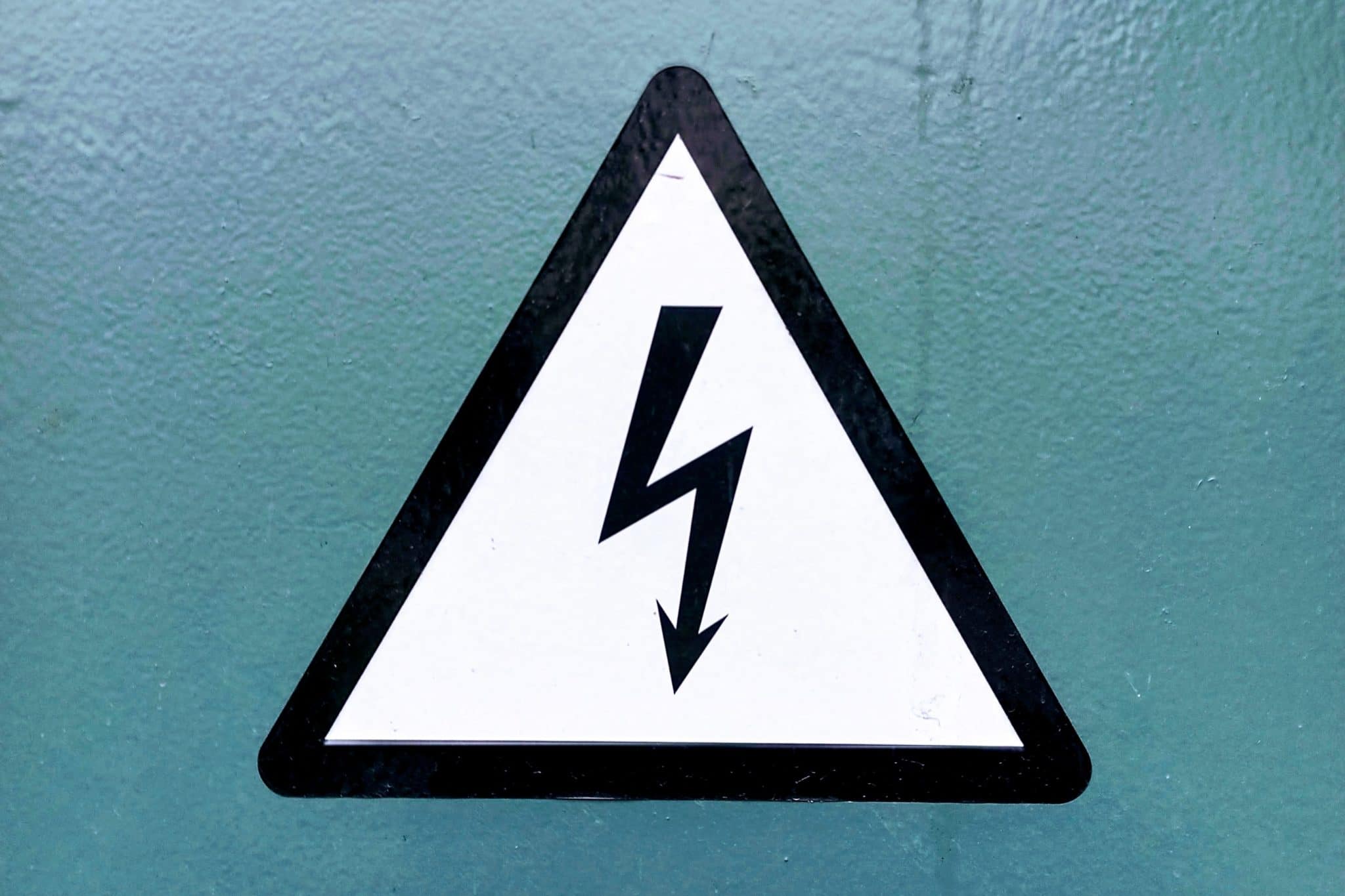Attic Inspection Safety: 5 Ways to Prevent Harm
Last Updated November 9, 2023
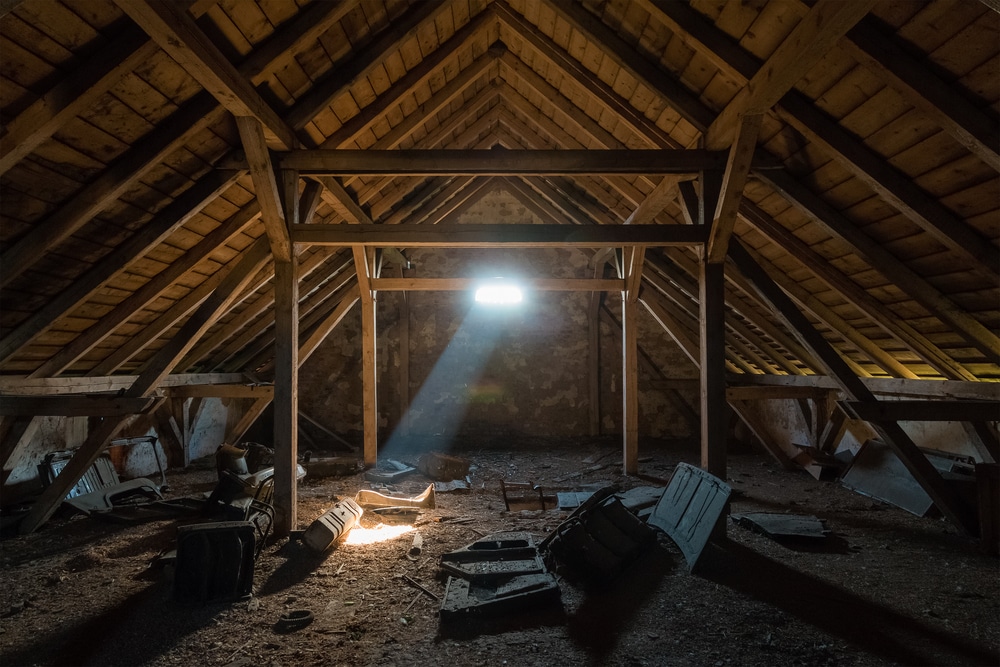
Last year, an inspector was performing an attic inspection in the peak heat of summer. Not recognizing the signs of heat exhaustion, the inspector finished the attic inspection and the rest of the home inspection. With worsening symptoms, the inspector drove home to rest. Upon returning home, the inspector’s condition declined rapidly. Before he could receive medical attention, the inspector tragically suffered a fatal heat stroke. His loss was felt deeply by those who knew him, especially those in the inspection industry.
Attic Inspection Safety and Home Inspectors
Inspecting homes is a dangerous job. From slick roofs to feral animals, rotted subflooring to invisible toxins, the average home inspector faces countless perils during their career. Some dangers, like attic inspections, can even be deadly. After the sudden and heartbreaking passing of the above home inspector, we wanted to give you the resources you need to keep yourself and your employees safe during attic inspections, especially in hot climates.
Among the dangers inspectors face while performing attic inspections, these four stand out:
- Heat-Related Illnesses
- Electrical Hazards
- Falls
- Harmful Debris
We go over the specifics of these dangers, how you can avoid them, and steps you can take to prioritize your attic inspection safety.
Heat-Related Illnesses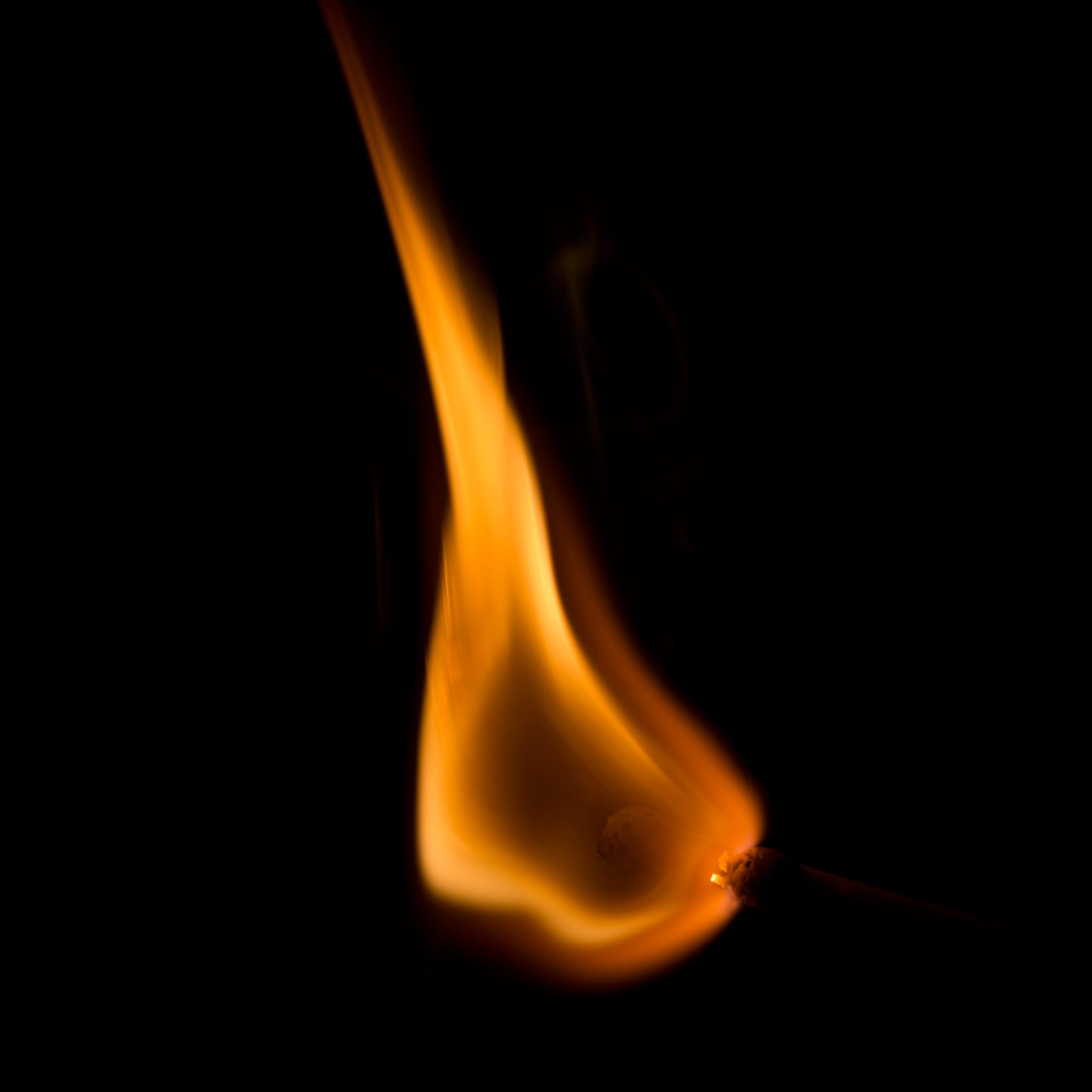
In the heat, attics reach unsafe temperatures, which can lead to heat-related illnesses. These include:
- Heat Rash
- Overheating Cramps
- Heat Exhaustion
- Heat Stroke
These ailments and their symptoms can creep up on you and your workers. You further open yourself up to danger by discounting the symptoms and not taking proper safety measures.
Some of these symptoms include, but are not limited to:
- Rashes or red bumps
- Thirst
- Muscle spasms
- Dizziness
- Headaches
- Fainting
- Confusion
We will more thoroughly address these symptoms and what you should do when you experience them later.
Electrical Hazards
Although they may not seem like an obvious threat, electrical exposures pose a significant danger to home inspectors performing attic inspections. Why? Insulation and the lack of light in attics can hide poor wiring.
Furthermore, attics may be damp from roof leaks. If insulation gets wet, and there are live wires underneath, the water can conduct electricity and energize the insulation itself, thus increasing your risk of harm.
According to the Canadian Centre for Occupational Health and Safety (CCOHS), electrical currents cause four main types of injuries:
- Electrocution
- Electric shock
- Burns
- Falls
When suffering an electrical injury, you’re likely to flinch or jolt back suddenly, thus exposing yourself to injuries from falling.
Falls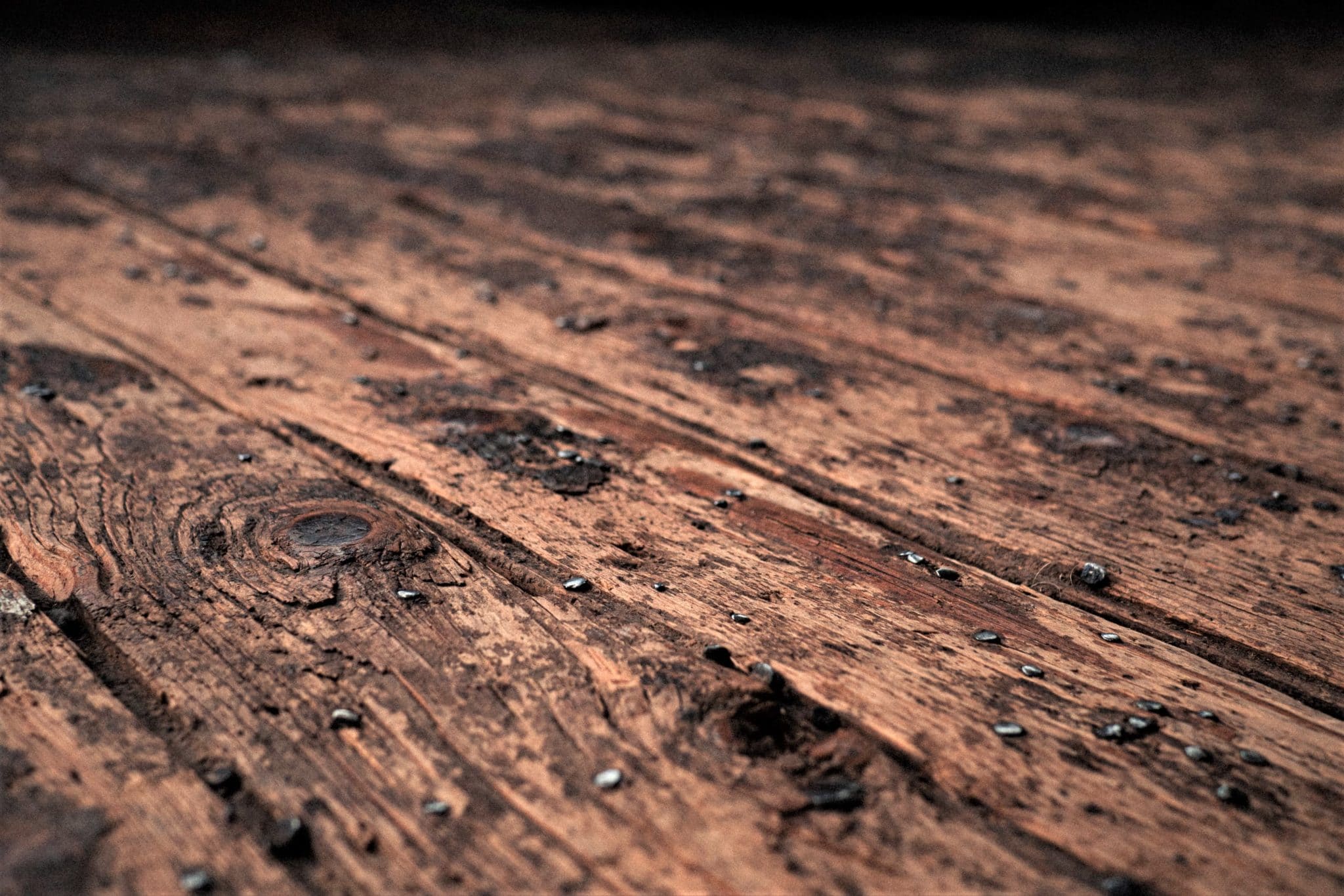
Dark and riddled with insulation, attics make it hard to look where you’re stepping. In fact, many attics lack safe walking surfaces altogether, being made of trusses, framing, and loose boards that are unstable to walk on.
According to the Bureau of Labor Statistics, slips, trips, and falls cause nearly 700 fatalities in the workplace each year, reported the Occupational Safety and Health Administration (OSHA). Additionally, injuries from slips, trips, and falls result in weeks and months of recovery. Indeed, many factors can exacerbate slip and trip hazards, including the size of the home and your mental state.
Broken Pipes
When performing attic inspections in apartment buildings, townhouses, or condominiums, there is a possibility of stepping on vent pipes and fire sprinkler lines if you slip. Breaking these components can not only cause thousands of dollars in water damage, but can also seriously injure you in the process.
Harmful Debris
Whether homeowners know it or not, they share their homes with uninvited guests, like insects, rodents, or bats—the three vermin about which homeowners express the most concern. And along with these creatures comes harmful waste.
Jerry Stonger from Preferred Inspection Services in California cautions inspectors to not overlook this particular danger.
“Attics do pose a danger and not just the danger of stepping through the ceiling,” Stonger said. “[There can be] potentially harmful debris, rodent traps, and feces.”
In addition to debris from animals, attics may contain mold, toxic vermiculite, asbestos, and other airborne toxins.
Thankfully, attic-related injuries and illnesses on the job are avoidable. Here are five ways to manage your risk against harm.
1. Prepare for hot temperatures.
If you are in a region that reaches high temperatures and/or is high in humidity, then take appropriate precautions. Consider the temperature and risk level before performing any attic inspections. OSHA provides the table below for reference.
Your safety standards should consider the following:
- Water intake
- Frequency of breaks
- Length of workday
- Acclimatization to extreme heat
Develop a long-term and short-term plan for hot weather. And, if you have employees, train them to recognize common heat-related illness symptoms.
According to OSHA, you should be looking for these symptoms:
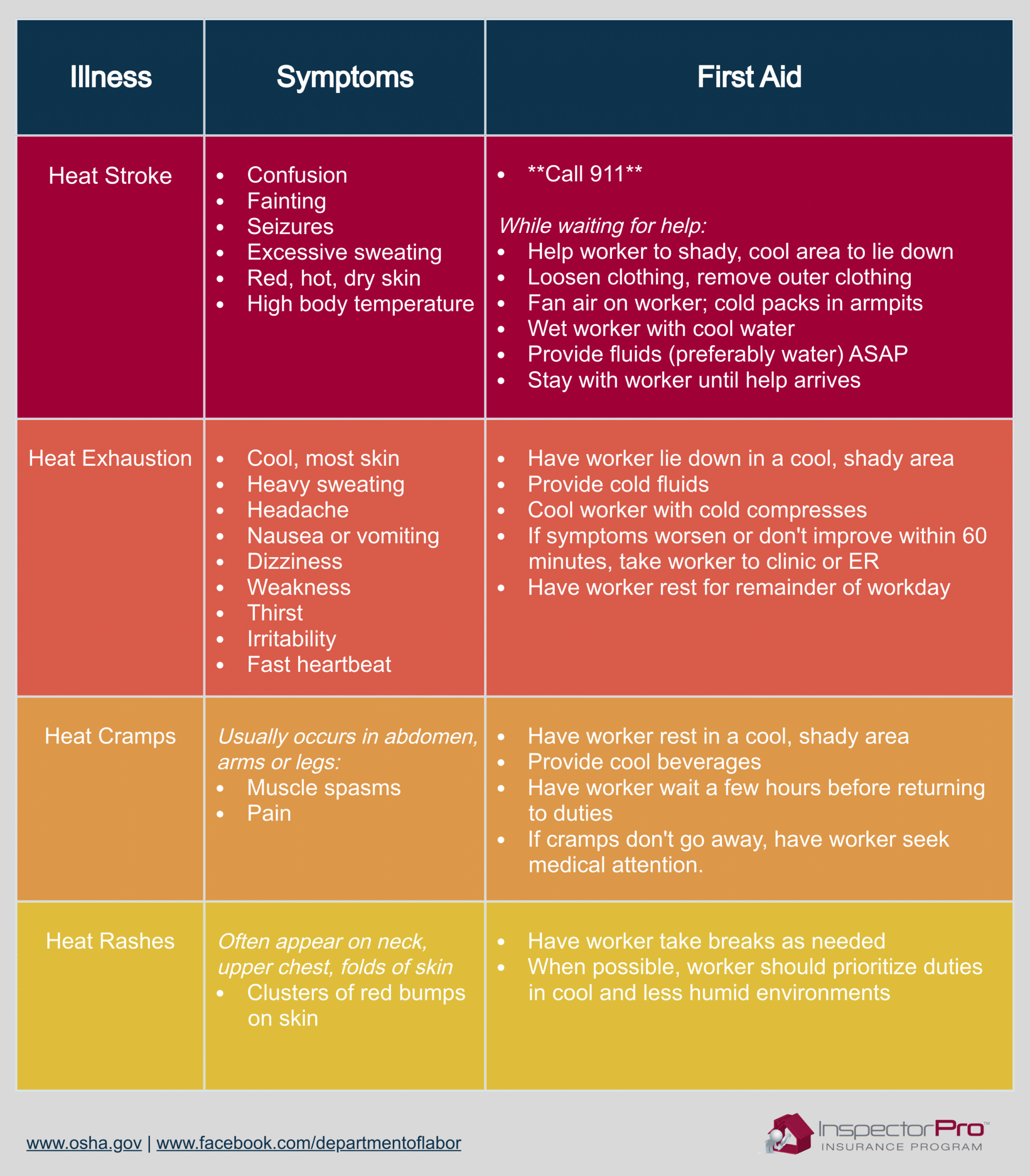
Develop a procedure that addresses these health risks in full. That way, if you or an employee are suffering from heat-related symptoms, there are explicit emergency guidelines in place.
2. Have adequate lighting.
According to OSHA, one of the best things you can do to avoid trips and slips is make sure you can see where you are walking. As we discussed earlier, watching where you’re stepping can be particularly difficult in an attic. However, by making sure the area is well-lit, OSHA explains, you better your chances of traversing safely.
Anthony Cooper from Cooper Inspections LLC in Ohio agrees.
“Make sure you have a great head light and always carrier an extra flashlight and always make sure you walk on wood,” Cooper said.
3. Don’t rush.
Traversing attics is tricky, even with proper lighting.
“One wrong step, or one slip off a joist and you are likely to blow a hole in the ceiling, catch your foot on wire, crush a heating duct, pull loose a bathroom vent, get punctured by a loose nail, twist an ankle…you get the idea,” said John Rodkey from JMR Inspections in Massachusetts.
With so many things that can go wrong during an attic inspection, give yourself permission to slow down and exercise caution.
Chuck Lambert from Sunrise Inspection Services in California gives sound advice.
“Take it slow and always know where you are putting your feet,” Lambert said.
In addition to avoiding falls, slowing down allows you to assess how you are doing physically.
When inspecting in extreme heat, it’s easy to rush the process to get it over with. However, rushing could put you in further danger. That’s why inspectors should practice physiological monitoring throughout their inspections. OSHA provides this table as a guide for how frequently you should evaluate your health while working in the heat:
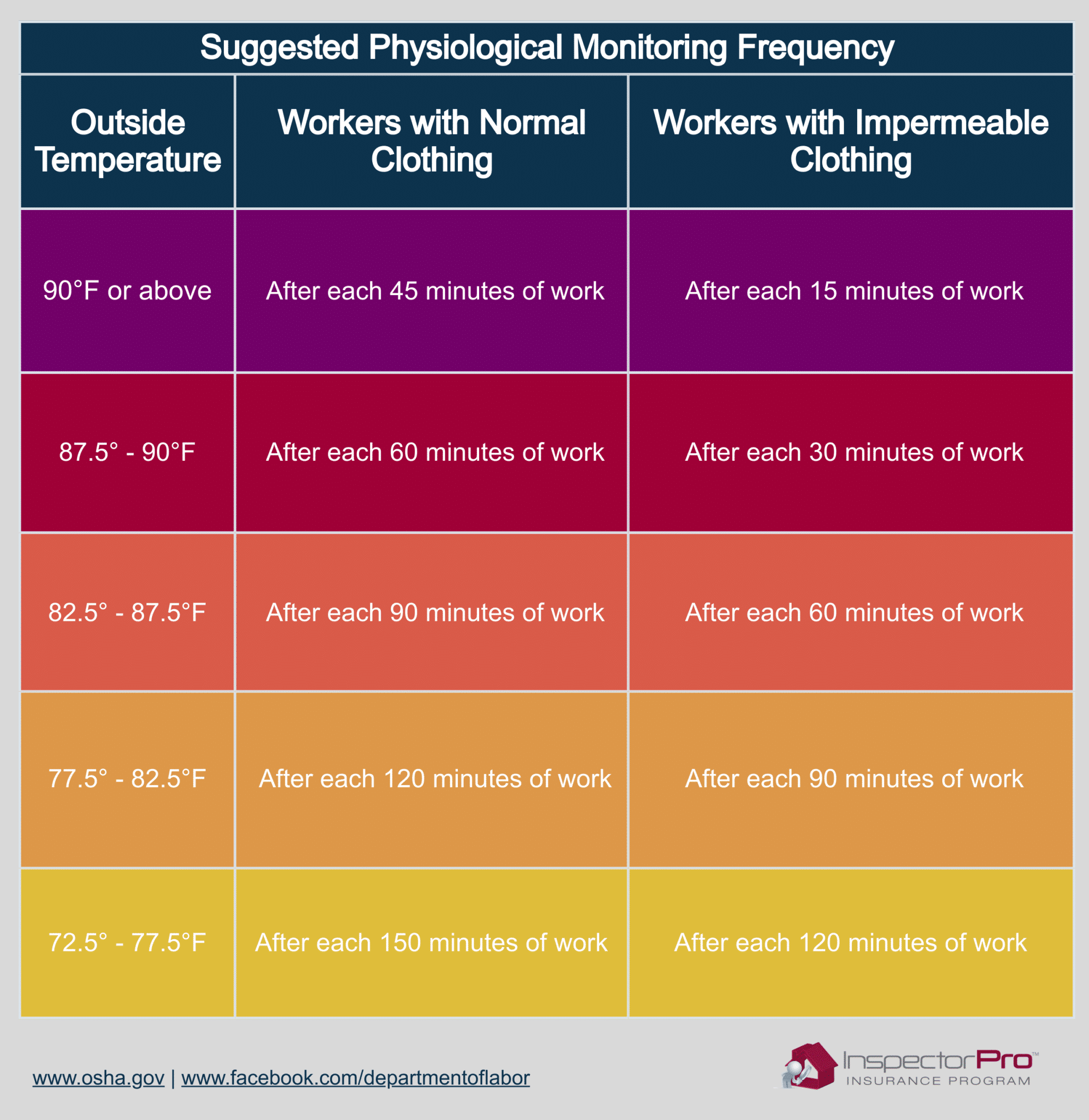
4. If it’s too dangerous, skip it.
If you or your employees notice these symptoms during a break, take emergency measures and reschedule the inspection for a safer time.
As an expert in your field, you determine what is unsafe—not your client. No matter the possible pushback you receive from clients, your safety always comes first.
Have a policy for attic inspection safety.
According to Matt Lottes of Pillar To Post Home Inspectors in Indiana, it helps to have policies set in place ahead of time. This sets a company standard for when to inspect and when to skip an attic. Setting a standard will keep you and your team consistent across inspections, which limits your liability. It can also help your workers have confidence in rejecting unsafe inspections.
“When you have set policies, it makes it easier for an employee in the field to defend why he’s not going to do something,” Lottes said. “That idea takes the pressure off [to do something] if the client is pressuring him.”
Additionally, Gordon Glidden from Inland Lakes Inspection Services in Michigan advises that inspectors follow a safety checklist when taking a first look at an attic from the hatch. Ask yourself these questions:
- Are animal droppings visible?
- When shining a light, do you see reflections from pests’ eyes?
- Do you see any electrical cables that are loose or exposed?
- Is there evidence of water damage and/or wood rot?
- Do you identify vermiculate insulation?
- Are the joists inaccessible?
- Does the access hatch not have a safe ladder? Is there not a place you can set up your own ladder safely?
If you answer “yes” to any of those questions, entering the attic can put you in danger.
Address it in your report.
Some inspectors also suggest outlining the limitations of attic inspections, particularly regarding the access and insulation, in your report.
Below is the attic safety excerpt Lottes’ company puts in every inspection report:
“Attics and all related components are inspected visually from an area that does not put either the inspector or the home at risk. The method of inspection is at the sole discretion of the inspector and depends on a number of factors including, but not limited to, accessibility, clearances, insulation levels, stored items, temperature, etc. Inspectors will access the attic, if possible, but most attics are unfinished and outside living spaces of the home. Many attics are too dangerous to fully enter or are not accessible due to houses’ structures. Hidden attic damage is always possible, and no attic can be fully evaluated at the time of the inspection.”
If you are unable to enter or complete an attic inspection, disclose that in your report. Detail what you were able to inspect and from what vantage point (i.e. the hatch). Then, explain what made the attic unsafe and document the condition with photos. If property owners’ furniture or belongings interfered with walkways, you may choose to inspect the attic after these obstacles have been removed.
5. Carry workers’ compensation insurance.
If you or one of your home inspectors is injured during an attic inspection, workers’ compensation benefits may be available to you.
Workers’ comp insurance provides employees who suffer from work-related injuries or diseases with access to medical and wage benefits. Unlike general liability (GL) insurance, which covers inspection-related bodily injury and property damage claims for non-employees, workers’ compensation looks out for you and the people who work for your company.
“One accident can not only hurt you and maybe put you out of business, but more importantly, that employee has to have a way of making a living and getting his bills paid for it if it happens on the job,” said Alan Grubb of 4U Home, Inc. in Maryland in a previous article.
By covering job-related injury and illness costs, workers’ comp protects both employees and employers. And employees work under less financial risk knowing they have on-the-job protection. Additionally, employers limit their liability and deter litigation.
“If you have any employees, they need to have workman’s comp,” Grubb said. “The amount that it costs for workman’s comp is minor [compared] to what it could cost you or your employee if you didn’t have it.”
What expenses can workers’ comp cover?
In attic-related injury cases, workers’ comp coverage can assist inspectors in the following ways:
- Medical Bills. From doctor appointments to hospital visits, to medications and mobility aids, workers’ comp helps pay to treat employee illnesses and injuries. Workers’ comp can even help inspectors pay for their mileage when traveling to receive medical care.
- Lost Wages. Sometimes, attic-related injuries and illnesses are bad enough that employees are unable to work. Workers’ comp can pay a percentage of the money the employee would be earning if they weren’t in recovery.
- Rehab Benefits. Workers’ comp policies may offer medical rehab benefits, like physical therapy, to help employees recover. Additionally, they can help pay for vocational rehab for severely injured employees unable to perform their previous jobs. By helping these injured workers attain new job-specific skills, vocational rehab helps them return to work in a different role.
- Death Benefits. If an employee died, workers’ comp insurance may help cover funeral costs and lost income for the employee’s family.
Note that, since states regulate workers’ comp coverage, the amounts insurers will pay for the above benefits varies from state to state.
“Each state has its own regulations as to the amount and duration of lost income benefits and medical or rehabilitation services,” said Brianne Smith, InspectorPro broker and workers’ comp specialist. “However, workers’ comp is a no-fault coverage nationwide. That means it will provide coverage no matter who was at fault.”
Enhance attic inspection safety with workers’ comp insurance.
Prioritize safety in your attic inspections by taking these measures and having the right coverage. Do your part to abide by state law and protect your employees and your business by carrying workers’ compensation insurance. And do so with a company prepared to meet the inspection industry’s unique coverage needs.
“Things happen when you go out and inspect. And if something goes wrong, you want to make sure that you are covered…. I don’t want to be the one who doesn’t have the proper insurance in case something goes wrong,” said Walter L. Williams from PPT Inspections in a previous article. “For a few dollars more, [workers’ comp] is going to give you peace of mind.”
Get a quote for workers’ comp for home inspectors today and complete our application. Or, you can learn more about workers’ comp by reading this long-form article on our blog.
Interested in learning more about how you can prevent inspection-related injuries? Download or free infographic, “6 Tips to Prevent Inspection Injuries.”


